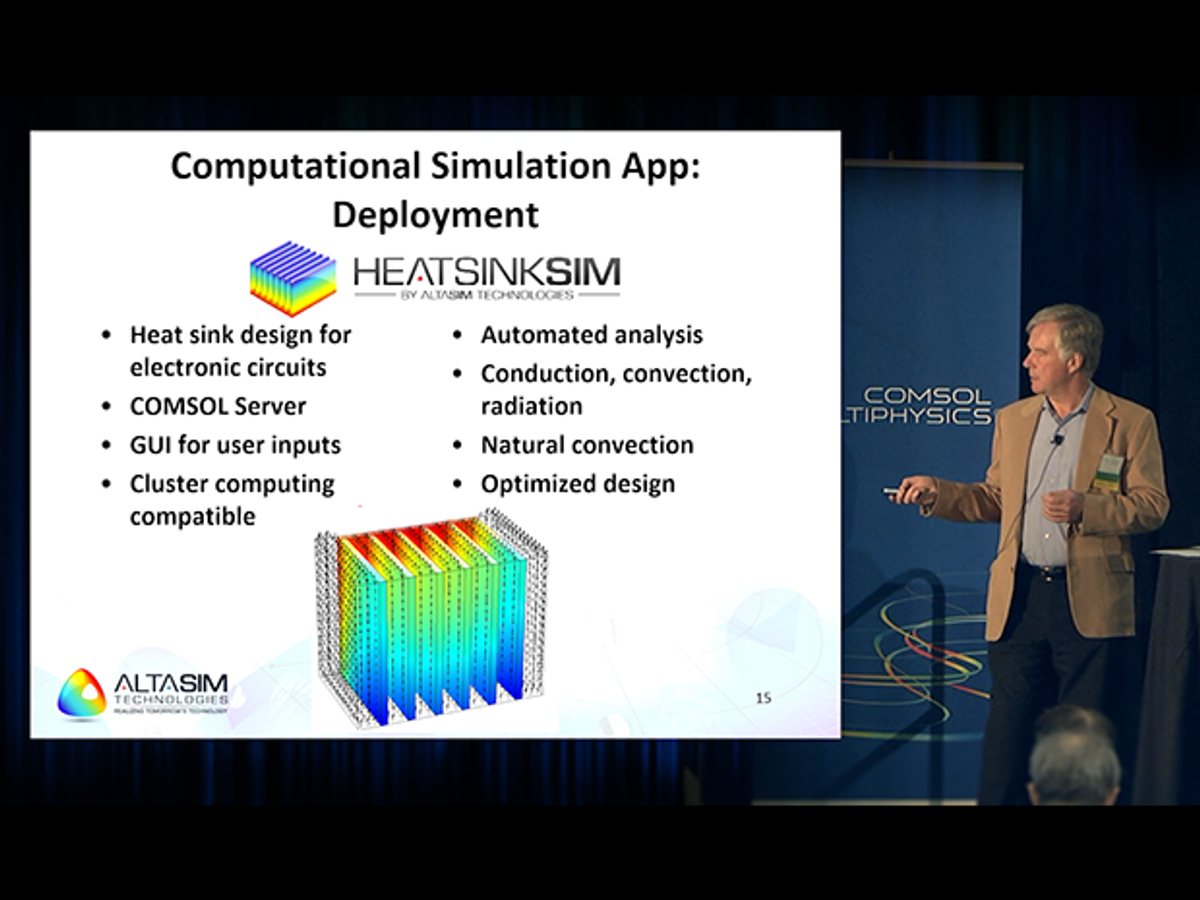In this keynote presentation at the COMSOL Conference in Boston, Jeff Crompton, cofounder and principal of AltaSim Technologies, speaks about using computational analysis to improve and develop new technologies, products and processes, and to bring products to market faster with reduced development costs.
Generally, in the past, new processes and product development was led by larger companies, there was a heavy bias towards time-consuming physical prototypes, and innovation was incremental and evolutionary. At a certain point within companies, it became clear that it would not be possible to continue to crash cars worth thousands of dollars just to get incremental improvements in the impact resistance. Nor would it be feasible to test nuclear power designs by evaluation and fixing the flaws as you go along.
Mathematical modeling and numerical simulation, made possible by rapid improvements in computer hardware, has benefited a diverse spectrum of industries, from potato chip manufacturers who prevented chips from flying off the conveyor belt, to airline wing engineers who achieved a tenfold reduction in the number of physical prototypes necessary. AltaSim makes use of the Application Builder within COMSOL Multiphysic® software to create simulation apps that streamline simulation communication with the client.
One of such computational apps deployed is HeatSinkSim, which contains a heat sink design for electronic circuits and provides analysis of conduction, convection and radiation. The analysis contains two levels: the first a parametric geometry sweep to determine optimum fin size spacing, followed by a recommendation as to whether component temperatures will be exceeded. The second is the option for a full heat transfer analysis, which allows the user to calculate temperature distribution over the entire heat sink. The app is deployed from the COMSOL Server, has an easy-to-use GUI for user inputs, and is cluster-computing compatible.
Computational apps extend the power of numerical simulation to the rest of the design team while concealing the complexity of the underlying mathematical modeling in an easy-to-use app. With an app, it is possible to make expert knowledge widely available, fostering innovation at every level. As an app is much more straightforward to use than any simulation software, the simulation reaches a much greater audience.
The return on investment of modeling and simulation is significant, as companies have reported important reductions in time, expenses, and prototyping as well as increases in quality, productivity, and overall development. As new products and technologies account for a significant portion of company revenues, time to market and development costs are more important than ever. As products are increasingly more complex, multiphysics simulation allows companies to continually innovate, stay ahead of the curve, and be commercially successful.
Learn More: https://comsol.com/c/3wvz




